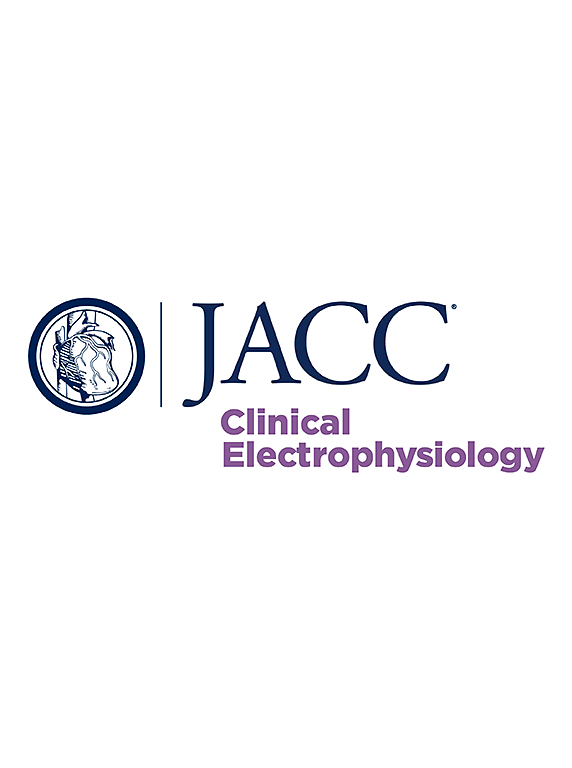Impact of Prior Exercise Practice on Disease Characteristics in Desmoplakin-Related Arrhythmogenic Left Ventricular Cardiomyopathy
IF 7.7
1区 医学
Q1 CARDIAC & CARDIOVASCULAR SYSTEMS
引用次数: 0
Abstract
Background
The harmful effects of high-intensity (HI) and long duration (LD) exercise have been reported in arrhythmogenic right ventricular cardiomyopathy, including in asymptomatic genetic variant carriers. However, the impact of exercise remains unclear in desmoplakin (DSP) gene variant carriers at risk of arrhythmogenic left ventricular cardiomyopathy (ALVC).
Objectives
The goal of this study was to assess the relationship between HI and LD exercise and the risk of developing an ALVC phenotype and its severity in DSP variant carriers.
Methods
In a monocentric retrospective study, patients with DSP pathogenic or likely pathogenic variant were interviewed about their exercise practice before genetic or disease diagnosis. HI and LD exercise were defined as having practiced at least one sport with an intensity ≥6 METs and ≥2.5 hours/week, respectively. We studied the association of HI and LD exercise practice with the risk of ALVC phenotype occurrence at diagnosis.
Results
A total of 85 patients were included (mean age 39 ± 19 years; 49% female). Sixty-nine percent had practiced HI exercise and 66% LD exercise. The rate of patients with an ALVC phenotype at time of diagnosis did not differ between patients having practiced HI and LD exercise and those who had not (71% vs 65% [P = 0.60] and 70% vs 69% [P = 0.95]). The distribution of prior calculated exercise dose was not different between patients with vs those without ALVC phenotype at diagnosis (P = 0.57).
Conclusions
Prior exercise intensity, duration, and cumulated lifetime dose were not associated with an increased risk of developing an ALVC phenotype at the time of diagnosis in DSP variant carriers.
先前的运动训练对桥蛋白相关的致心律失常左室心肌病疾病特征的影响。
背景:高强度(HI)和长时间(LD)运动对心律失常性右室心肌病(包括无症状遗传变异携带者)的有害影响已被报道。然而,运动对具有致心律失常性左室心肌病(ALVC)风险的desmoplakin (DSP)基因变异携带者的影响尚不清楚。目的:本研究的目的是评估HI和LD运动与DSP变异携带者发生ALVC表型及其严重程度的风险之间的关系。方法:采用单中心回顾性研究,对患有DSP致病或可能致病变异的患者进行调查,询问其在遗传或疾病诊断前的运动情况。HI和LD运动被定义为分别进行了至少一项强度≥6mets和≥2.5小时/周的运动。我们研究了HI和LD锻炼与诊断时ALVC表型发生风险的关系。结果:共纳入85例患者(平均年龄39±19岁;49%的女性)。69%的人做过HI运动,66%做过LD运动。诊断时ALVC表型患者的比例在进行HI和LD运动的患者和未进行运动的患者之间没有差异(71%对65% [P = 0.60], 70%对69% [P = 0.95])。先前计算的运动剂量分布在诊断时有ALVC表型与无ALVC表型的患者之间没有差异(P = 0.57)。结论:先前的运动强度、持续时间和累积终生剂量与DSP变异携带者在诊断时发生ALVC表型的风险增加无关。
本文章由计算机程序翻译,如有差异,请以英文原文为准。
求助全文
约1分钟内获得全文
求助全文
来源期刊

JACC. Clinical electrophysiology
CARDIAC & CARDIOVASCULAR SYSTEMS-
CiteScore
10.30
自引率
5.70%
发文量
250
期刊介绍:
JACC: Clinical Electrophysiology is one of a family of specialist journals launched by the renowned Journal of the American College of Cardiology (JACC). It encompasses all aspects of the epidemiology, pathogenesis, diagnosis and treatment of cardiac arrhythmias. Submissions of original research and state-of-the-art reviews from cardiology, cardiovascular surgery, neurology, outcomes research, and related fields are encouraged. Experimental and preclinical work that directly relates to diagnostic or therapeutic interventions are also encouraged. In general, case reports will not be considered for publication.
 求助内容:
求助内容: 应助结果提醒方式:
应助结果提醒方式:


